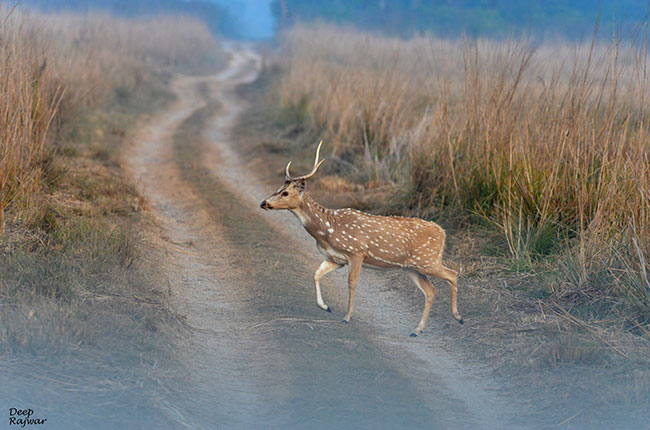
Spotted Deer (Chital or Cheetal)
The chital or cheetal (Axis axis), also known as spotted deer or axis deer, is a species of deer that is native in the Indian subcontinent. The species was first described by German naturalist Johann Christian Polycarp Erxleben in 1777. A moderate-sized deer, male chital reach nearly 90 centimetres (35 in) and females 70 centimetres (28 in) at the shoulder. While males weigh 30–75 kilograms (66–165 lb), the lighter females weigh 25–45 kilograms (55–99 lb). The species is sexually dimorphic: males are larger than females, and antlers are present only on males. The upper parts are golden to rufous, completely covered in white spots. The abdomen, rump, throat, insides of legs, ears and tail are all white. The antlers, three-pronged, are nearly 1 metre (3.3 ft) long.
|
Location:
Dhikala, Bijrani
Sight Season:
Can be sighted in winter and summer season.
|
|